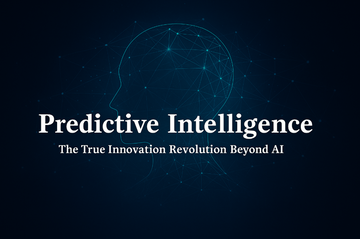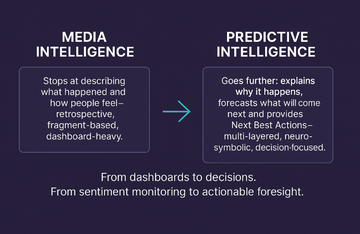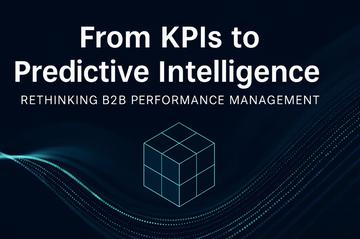Predictive Intelligence: The True Innovation Revolution Beyond AI
by Uwe Seebacher on Sep 22, 2025

By Prof. Dr. Uwe Seebacher
Structural and Methods Scientist | International Faculty | Thought Leader on Predictive Strategy and Post-Growth Transformation
Why AI Isn’t Enough – and What Really Transforms Business
Everywhere you look, AI dominates the headlines. From chatbots to image generators, artificial intelligence is praised as the engine of the next industrial revolution. But let’s be honest: most of what we call “AI” today is little more than better automation or pimped-up business intelligence. Useful, yes. Revolutionary? Not really.
The real revolution is Predictive Intelligence (PI).

Fig. 1: The Evolution from Data to Predictive intelligece (Source: own illustration)
Unlike AI, which is often treated as a toolbox of algorithms, Predictive Intelligence is a management approach. It integrates data, analytics, and machine learning into the very core of decision-making, transforming how organizations operate across every function — marketing, supply chain, finance, HR, and beyond.
Why AI Alone Falls Short
Think of AI as electricity in its earliest days. When factories first replaced steam engines with electric motors, productivity barely improved. Only when managers redesigned entire factories around electricity — with new workflows, layouts, and processes — did the real revolution take place.
AI today is in the same stage. Chatbots, dashboards, and pilots deliver incremental gains. But without changing the way we manage, organize, and decide, AI remains just a tool — not a transformation.
What Predictive Intelligence Really Means
Predictive Intelligence is about building an anticipatory enterprise. Instead of reacting to problems, companies can foresee what’s coming and act before issues escalate.
Examples:
-
Marketing & Sales: anticipate customer needs, personalize campaigns, and identify the most promising leads.
-
Operations & Supply Chain: predict demand, prevent machine failures, and avoid disruptions before they occur.
-
Finance & Risk: detect fraud instantly, forecast market shifts, and adjust plans in real time.
-
HR: predict turnover, identify top talent, and build stronger workforce strategies.
In short, PI doesn’t just answer what happened? (like business intelligence) or what might happen? (like predictive analytics). It provides next-best actions (NBA), guiding leaders with foresight.
Why Most “Predictive” Isn’t Truly Predictive
Here’s the uncomfortable truth: most so-called “predictive” tools on the market are just advanced analytics or AI-enhanced dashboards. They forecast a few KPIs, maybe generate nice charts with large language models — but they don’t embed prediction into organizational strategy.
Real Predictive Intelligence requires:
-
Neuro-symbolic AI: combining learning with reasoning for robust, explainable results.
-
Valid methodical and structural design: aligning predictions with business functions, not just industries.
-
Integration into decision-making: connecting forecasts directly to management processes.
Without these foundations, companies risk buying flashy “AI” tools that deliver surface insights but no sustainable advantage.
Why Functions Matter More Than Industries
Another key insight: PI is not about industries, but about functions.
A car manufacturer’s marketing department and a telecom provider’s marketing department face similar predictive challenges: segmenting customers, forecasting demand, personalizing outreach. What matters is the function — not whether it’s automotive, healthcare, or finance.
By focusing on business functions, PI becomes universally applicable, transforming the entire value chain (à la Michael Porter).
A European Opportunity
This perspective is especially important for Europe. While the U.S. and China lead in raw AI development, Europe has always excelled in process innovation and management quality.
By embracing Predictive Intelligence, European companies — especially the Mittelstand — can leapfrog competitors. Instead of trying to outspend Silicon Valley in AI research, Europe can lead in applied intelligence, embedding foresight into daily operations and creating sustainable competitive advantage.
The Call to Action
The message is clear:
-
AI is an instrument. PI is the revolution.
-
AI automates. PI transforms.
-
AI solves tasks. PI changes business models.
The sooner leaders embrace this difference, the faster they can redesign their organizations for the future.
If you want your business to move beyond AI hype and into true predictive transformation, now is the time. Read the full paper on Linkedin as part of my post.
👉 Let’s talk about how Predictive Intelligence can make your organization anticipatory, resilient, and future-proof.




